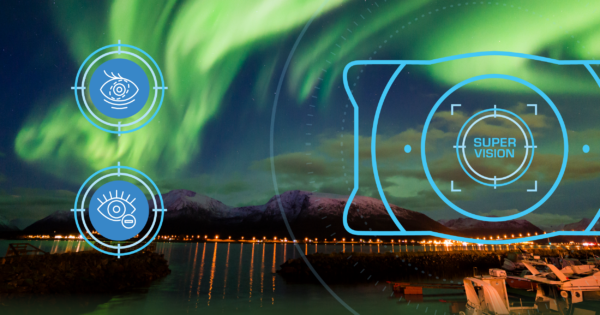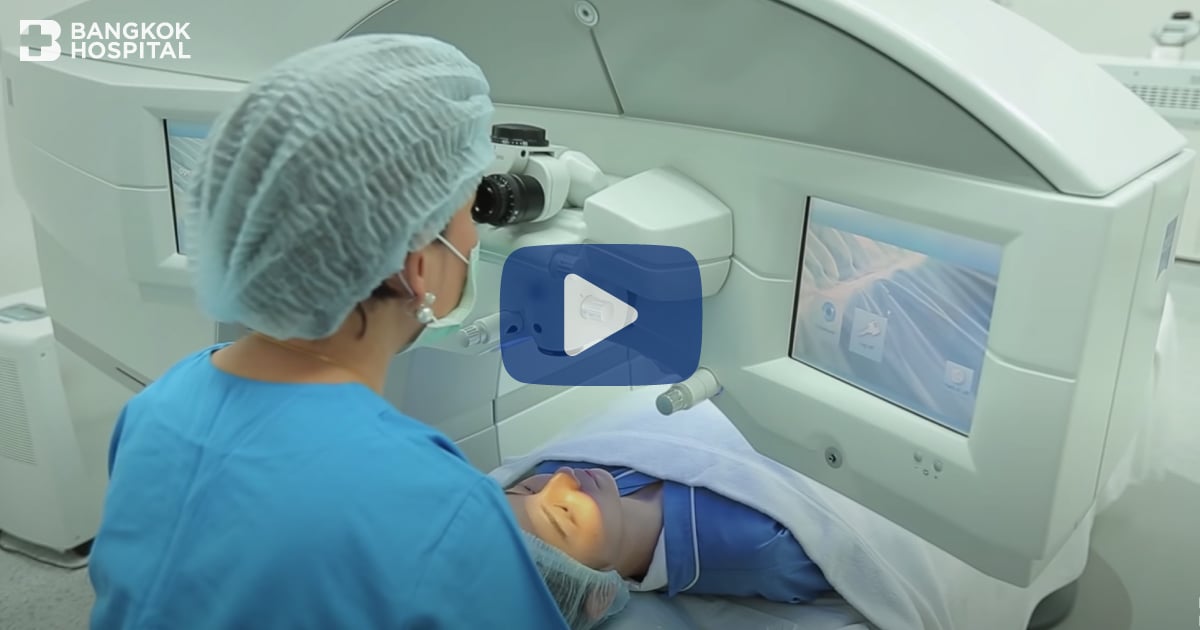If anyone believes that “vision” is an essential component of life, they would understand the efforts made in inventing and producing modern innovations for the preservation of eyesight and addressing various forms of vision impairment continuously. Currently, the innovation of ‘bladeless LASIK’ has been developed, which is a new technology that not only reduces risks and enhances the efficiency of treating eye problems but also provides more options for correcting vision abnormalities, especially in cases of nearsightedness, astigmatism, congenital farsightedness, and age-related farsightedness, which are common issues today. This process uses laser light to increase accuracy and safety in the procedure of separating corneal layers, which is crucial in improving the quality of vision and subsequently the quality of life for people in society.
Dr. Tarinee Sa-ngiampornpanit, an ophthalmologist specializing in corneas and vision correction at Bangkok Hospital, said that vision abnormalities are a result of the eye’s refractive power not aligning properly with the eye’s length, leading to improper light focus on the retina and causing refractive errors, which can be categorized into 4 main types: nearsightedness, astigmatism, congenital farsightedness, and age-related farsightedness. The method of correction depends on the individual’s physical condition, budget, and personal preferences.
One of these methods is wearing glasses (Spectacles), which has been widely used for a long time, is highly safe but also has some limitations, such as inconvenience in playing sports, certain professions like flight attendants, and issues related to personal image. Using contact lenses is another popular alternative to glasses. However, inadequate care can lead to eye infections. Additionally, wearing contact lenses may come with other issues such as allergic reactions to the lenses or solution, and restrictions on certain activities like swimming or being in smoky areas. As a result, a significant number of people turn to refractive surgery to correct vision problems, which has been developed continuously over decades. Patients do not need to rely on glasses or contact lenses, and new technologies are being integrated to improve the effectiveness of the treatment and increase patient confidence, starting from Radial Keratotomy (RK) to direct corneal surface treatment with Excimer Laser called Photorefractive Keratectomy (PRK).
Dr. Tarinee Sa-ngiampornpanit further explained that Photorefractive Keratectomy or PRK is a permanent method of correcting vision by removing the outermost corneal surface, known as the Epithelium, making it resemble a peeled surface, and then directly reshaping the corneal surface with an Excimer Laser. This method can correct nearsightedness, astigmatism, and congenital farsightedness. Although PRK has been around for decades before LASIK, it remains recognized for its treatment efficacy to this day. However, it does have limitations for those with high prescriptions, as it can lead to scarring on the cornea. Another well-known corrective surgery is ‘LASIK’ (Lasik), a permanent treatment for vision problems, capable of correcting nearsightedness, astigmatism, congenital farsightedness, and age-related farsightedness by separating the upper corneal layer to create a flap, then using the Excimer Laser to correct the vision on the middle corneal layer and reshape the overall corneal curvature.
Among all methods of correcting vision, ‘LASIK’ is a popular choice, safe and effective, as stated by Dr. Tarinee, explaining that LASIK has been used in Thailand for about two decades. Besides allowing patients to live without the need for glasses or contact lenses, LASIK has become a part of enhancing patients’ image and confidence. “In fact, LASIK has been around for over 20 years. The procedure involves two main steps: separating the corneal layer to open up a flap-like shape, leaving a hinge on one side. Then, an Excimer Laser, which is a heat-free, precise, and gentle laser for the eyes, is used to correct the vision. In the past, the corneal layer separation used a special blade device known as a Microkeratome to create a corneal flap. In recent times, new technologies have introduced the use of a laser, the Femtosecond Laser, which led to ‘bladeless LASIK’ (FemtoLasik), known for its precision through laser use in every step, improving efficiency, reducing complications, and minimizing post-surgery irritation, helping the wound heal faster,” explained Dr. Tarinee.
FemtoLasik is a bladeless LASIK method for treating vision problems, where the corneal layer is separated using laser light (Femtosecond Laser) instead of a blade. This new technology has been recognized globally and adopted by leading hospitals worldwide, including Bangkok Lasik Center, which chose the Femtosecond Laser device VisuMax by Carl Zeiss. This technology is developed to enable complete and perfect corneal layer separation within just 17-20 seconds, focusing the laser beneath the corneal surface with precision, gentle touch, making patients comfortable during surgery, reducing discrepancies in corneal layer separation, minimizing corneal abrasion risks, and ensuring a smooth separated cornea. The overall surgery time averages about 15 minutes per eye, plus rapid corneal recovery helps shorten the recovery period.
With a combination of modern equipment, expert doctors, and over a decade of experience under the JCI healthcare standard, one can be assured that the “Bangkok Lasik Center” is a worthwhile option for comprehensive vision problem solutions.
Source: Matichon Newspaper










